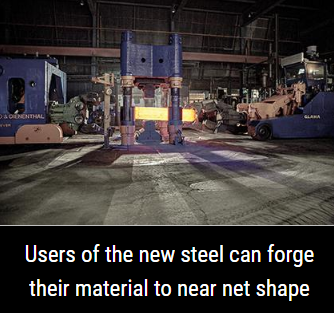Welcome to Sino Bearings web
24x7 HOTLINE:+86-28-81454188

 NEWS
NEWS
Patrik Ölund explains how the latest addition to a family of steel products is creating new opportunities for near net shape forming operations.
Traditionally, steels were classified into four general categories: tool steel, stainless steel, engineering steel and maraging steels. In 2017, the launch of Ovako’s Hybrid Steel created a new family of grades with an innovative alloying philosophy. The result is that the key properties of each category are available in one high-performance steel (Fig.1.).
The family has now grown to include Hybrid Steel 50, a grade that offers exciting possibilities for component manufacturers to dispense with the need for quenched and tempered steel. By using the new grade, they can forge their component to near net shape, machine it in a soft condition and then apply a simple ageing treatment to achieve the final hardness required.
Two well-established precipitate phases are combined to strengthen Hybrid Steel: alloy carbide and inter-metallic. It also uses a creative alloying philosophy that minimises segregation. An important feature is that the significant levels of aluminium enable a strong combination of attractive properties. This is because aluminium reacts with nickel to form very small inter-metallic precipitates, but nearer the surface it also helps to form a protective oxide barrier.
The steel is ideal to meet the demands of high-stress, elevated-temperature applications where mechanical and fatigue strength are critical. It also offers good resistance against corrosion and oxidation, as well as good weldability. Furthermore, unlike some niche steel grades, Hybrid Steel is produced without the need for expensive small-batch processes.
A New Grade For Lower Hardness Applications
Hybrid Steel 60 and 55 were the first two commercial grades in the family. The naming results from the hardness they are designed to: 60 and 55 HRC, respectively. Hybrid Steel 60 is a new grade ofbearing steel for applications where added strength is needed. Hybrid Steel 55 suits an array of engineering steel needs.
Following the launch of Hybrid Steel, Ovako began to receive enquiries from manufacturers of critical high-strength components, especially in the automotive industry. Their aim was to find an alternative to the quenched and tempered steels in current use. They do perform well, especially in terms of strength, toughness and fatigue life. However, there are some downsides, such as renewed surface oxidisation, which for some components means that cavities cannot be cleaned, or the heat treatment has to be performed in a protective atmosphere, which is expensive. Distortion is also an issue, so that machining allowances have to be increased.
Hybrid Steel 55 could not offer an immediate answer. That was because in components such as suspension arms it would result in hardness being too high, combined with low toughness. Furthermore, following hot forging and cooling, the steel would be hard to machine. That prompted Ovako to develop a new grade – Hybrid Steel 50 – designed around a hardness of 50 HRC. The main difference from the other two grades is a reduced level of vanadium.
Ideal Solution For Near Net Shape Forging
Hybrid Steel 50 is ideal for near net shape forging as it does not need to be quenched to achieve a martensitic structure after hot forging. This avoids the need for an environmentally harmful quenchant. It also minimises component distortion, enabling a reduction in the need for final machining processes. The decrease in scrap and need for less handling increases productivity and saves machining tool costs.
A particular advantage is that the new steel is straightforward to machine in a relatively soft condition after hot forging. Then, low-temperature precipitation tempering, typically between 500-620°C, will provide the final hardness required.
for the component. The benefit is that there is very low distortion and only minimal surface oxidisation. Significant cost savings can be possible, especially as only a simple ageing furnace is required. This production route could also help minimise CO₂ emissions for some components.
The final strength of Hybrid Steel 50 will vary considerably according to the specific process applied, as shown in Fig. 2. In general, it performs better than quenched and tempered steels.
The development of Hybrid Steel 50 is opening up new opportunities for cost-effective near net shape forging. It is just one of a number of options for new grades currently being explored for the innovative family that is primed for growth.